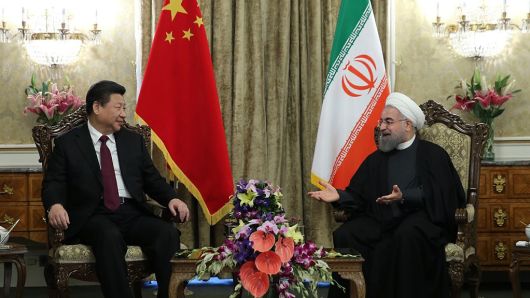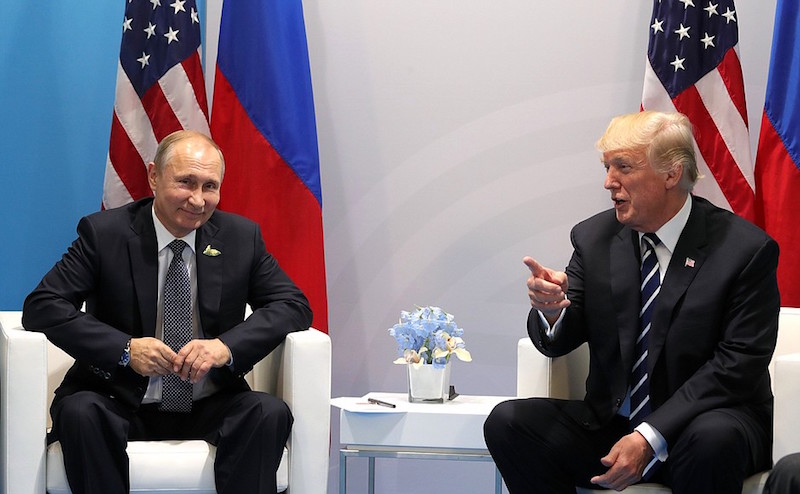
 American Natural Gas Industry Braces for New Chinese Tariffs
American Natural Gas Industry Braces for New Chinese TariffsThis week, as the China-U.S. trade war continued to escalate, the status of two key energy products on the new tariff lists drew global attention: crude oil and natural gas. On Tuesday, the U.S. government announced that nearly $16 billion worth of Chinese goods would now face 25 percent tariffs from August 23. This set of tariffs, covering over 200 different products, are the latest since the first round went into effect in July.
The Chinese government's list of retaliatory tariffs on American products, announced on Wednesday, did not include crude oil, despite its inclusion on China's original tariff list, published in June. This week, Reuters reported that the Chinese government's decision not to include oil on the final list came in the wake of lobbying by the Sinopec Group, a key Chinese importer of American crude, which targeted various agencies including the Chinese Ministry of Finance and the Ministry of Commerce. China became the world's largest importer of crude oil this February. The country's dependence on imported crude oil is an ongoing obstacle to President Xi Jinping's drive to pursue more environmentally-conscious policies, including those set out in the 2020 Air Pollution Action Plan, covered in China This Week in July.
Although the Chinese government left crude oil off its tariff list, American liquefied natural gas was included and will be subject to a 25 percent duty, despite the importance of the product to China's ongoing efforts to transition electricity production from coal to natural gas. China is expected to account for almost half the global growth in demand for this product over the next five years. In earlier negotiations between the Trump administration and Chinese Vice Premier Liu He, China had offered to increase its purchases of both energy products if the U.S. had abandoned its plans to impose tariffs on Chinese products.
 Beidaihe Meeting Reportedly Underway
Beidaihe Meeting Reportedly UnderwayThis week, media outlets have reported that the Chinese Communist Party's annual summer conclave in Beidaihe is underway. Party leaders have gathered in Beidaihe, a beach resort north-east of Beijing, in varying degrees of frequency since the 1950s. As The Diplomat notes, Chinese state media tends to refrain from reporting on the closed-door meeting, during which senior officials and retired party leaders are expected to discuss national issues, policy and personnel.
On Wednesday, Xinhua offered a clue that the meeting was underway when it reported that Premier Li Keqiang had met United Nations General Assembly President Maria Fernanda Espinosa in Beidaihe, where the two discussed cooperation on free trade and reiterated the importance of multilateralism.
The Beidaihe meeting comes during a summer in which President Xi has faced "a steady stream of bad news," as Professor Minxin Pei argued in an article published recently on China-US Focus. This bad news includes China's vaccination scandal, a fall in Chinese stock prices and the unfolding trade war with the United States. As Minxin Pei asserts, frustration on the part of China's elites over these issues is "palpable – and rising. . .the road ahead for Xi remains treacherous." Despite the lack of a public agenda for the meetings at Beidaihe, the talks will likely cover the Chinese government's approach to increasing tariff threats from the United States and policies related to China's ongoing efforts to cut down on debt.
 China Affirms Commercial Ties with Iran
China Affirms Commercial Ties with IranGoing against the position of America's allies around the world, President Trump withdrew from the Iran Nuclear Deal in May, leaving the future of the multilateral agreement in jeopardy. The deal, officially called the Joint Comprehensive Plan of Action, was an Obama-era agreement between Iran and the world's most powerful nations (including China, the U.S, the U.K., Russia, France and Germany) that lifted economic sanctions on Iran in exchange for the suspension of the country's nuclear program.
With America now out of the agreement, President Trump was free to initiate a new regime of sanctions against Iran this week, and he did so with a message to America's allies: "Anyone doing business with Iran will NOT be doing business with the United States."
This threat has so far proven hollow, as signatories of the Iran Nuclear Deal have expressed a willingness to defy President Trump in order to preserve both the agreement and their developing business interests in Iran. The EU has redoubled its commitment to the deal while Russia has said it will do "everything necessary" to preserve it.
China, Iran's top energy customer, stated this week that they will not bow to President Trump's threat and abandon their prosperous relationship with Iran. "China's commercial cooperation with Iran is open and transparent, reasonable and fair, not violating any United Nations Security Council resolutions," a government statement said, arguing that China's rights to pursue international agreements and conduct business should not be infringed.
 This Week's Top Commentary
This Week's Top CommentaryTorrey Taussig, a Robert Bosch Foundation Fellow based in Berlin, discussed the geopolitical outcomes of the recent Helsinki Summit between President Trump and Russian President Vladimir Putin in a commentary for China-US Focus. "As the dust settles on the Helsinki Summit, it is increasingly apparent that Trump's lack of preparation and a clear agenda gave Putin the winning hand. By even agreeing to meet with Putin, Trump allowed the Russian leader back onto the stage of great power politics," Taussig writes.
Noting the subsequent backlash President Trump faced from across the U.S. government, Taussig argues, "theoretically one could postulate that Trump's affinity for President Putin is part of a broader U.S. strategy to pull Russia away from China, thereby reducing the threat from one strategic adversary in order to focus on another. This strategy would be akin to President Nixon's 1972 Opening to China that sought to work with China in balancing America's greater Cold War threat, the Soviet Union. . .Yet this scenario is highly unlikely, if not impossible, given today's geopolitical realities." Read the full article here.
Prepared by China-US Focus editorial teams in Hong Kong and New York, this weekly newsletter offers you snap shots of latest trends and developments emerging from China every week, while adding a dose of historical perspective.
- 2018-08-03 Tentative Signs of U.S.-China Cooperation at the ASEAN Summit
- 2018-07-27 President Trump’s Trade War Bailout
- 2018-07-20 Xi Charms the World
- 2018-07-13 China Defends WTO Record in the Face of Additional U.S. Tariffs
- 2018-07-06 The Trade War Begins
- 2018-06-29 President Trump Chooses Slightly Softer Option on Chinese Investment
- 2018-06-22 Trade Tensions Spark Stock Sell-Off in China
- 2018-06-14 How “Comprehensive” Is the Kim-Trump Agreement?
- 2018-06-08 China Awards Putin First Medal of Friendship
- 2018-06-01 USPACOM Rebranded As U.S. Indo-Pacific Command
- 2018-05-25 Trump Cancels North Korea Meeting
- 2018-05-18 The On/Off Trump-Kim Summit
- 2018-05-11 American Goods Are Stuck at Chinese Ports
- 2018-05-04 China and the U.S. Lay Trade Demands on the Table
- 2018-04-27 U.S. Delegation Will Visit China Next Week
- 2018-04-20 China and the U.S. Seek Allies in Trade Dispute
- 2018-04-13 President Xi Reviews the PLA Navy
- 2018-04-06 China and Russia Pledge Military Cooperation in a Signal to the United States
- 2018-03-30 Kim Jong Un Visits Beijing on First Overseas Visit
- 2018-03-23 President Trump Asks for Tariffs on Around $50 Billion Worth of Chinese Imports
